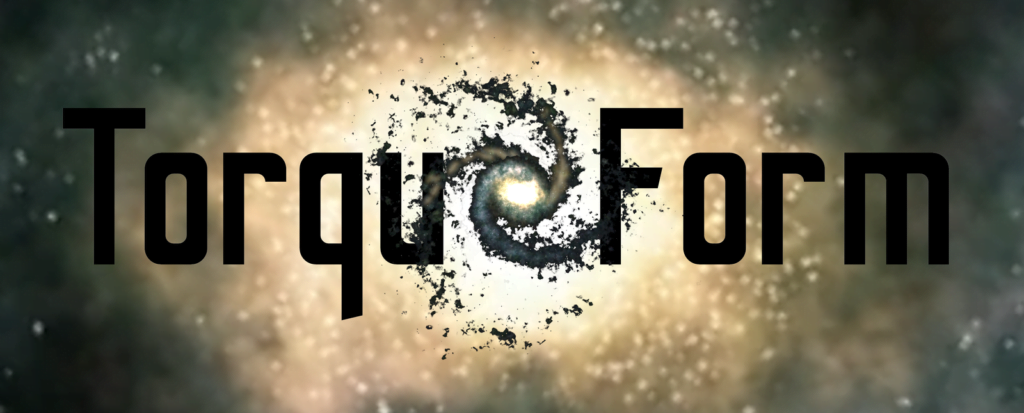XSE Flight Control Panel
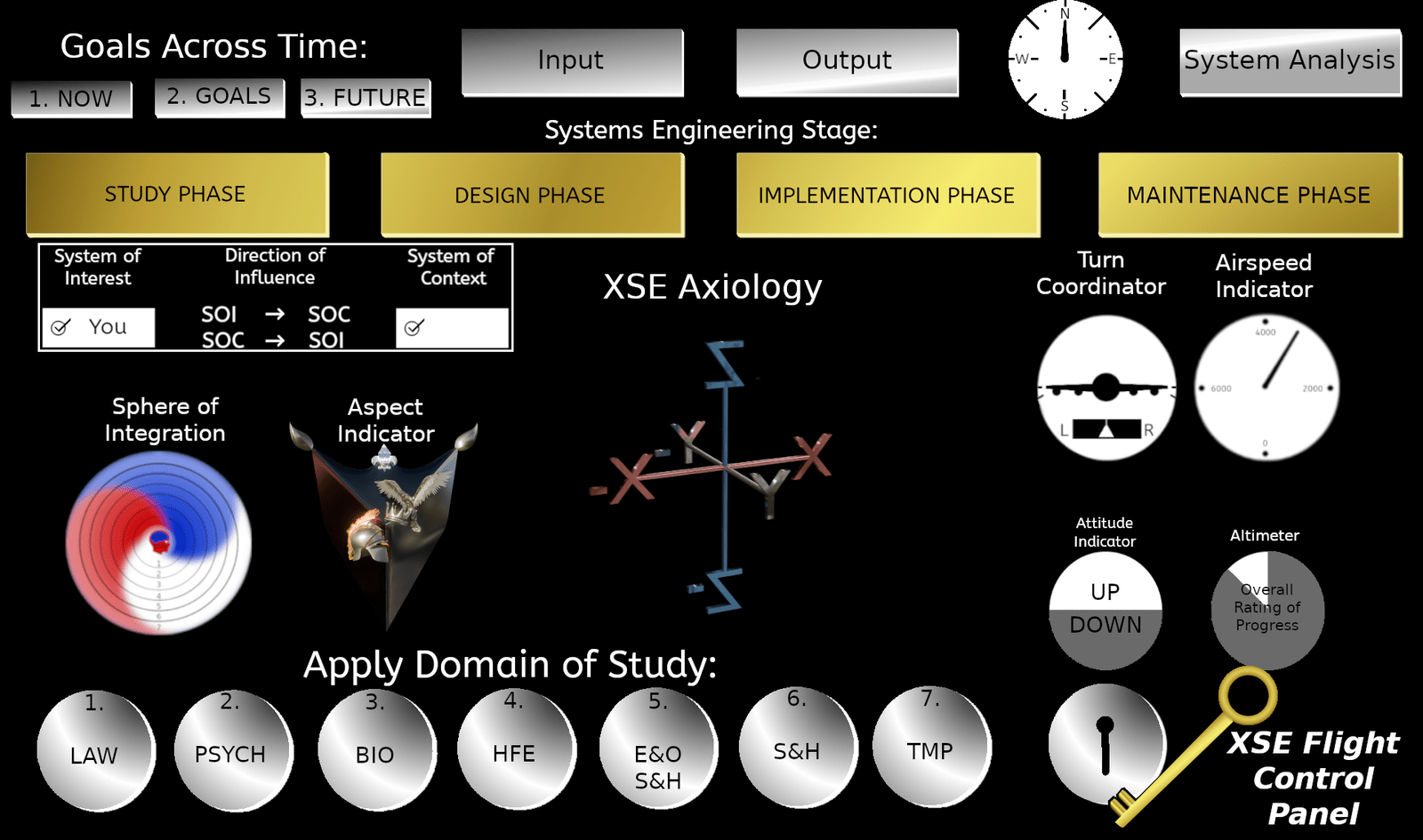
1. Now

What is the current status of your System of Interest (For example, you).
Who are you and where are you at in life?
Y Axis

The actual stage of the system life cycle is plotted on the Y axis (not chronological age). The Y Axiom is the construct of the Y Axis and States that the Optimal Choices arrived at from the X Axiom (Critical and Creative Thinking Analysis) must be followed through with and technically applied to the system.
Z Axis

Sources and resources are plotted on the Z axis. Accordingly, the Z Axiom states that Beyond Global and Elite sources must be sought in order to then analyze with Critical and Creative Thinking (X Axiom) in order to arrive at optimal choices to be followed through with and technically applied to the system (Y Axiom). Beyond Global and Elite Sourcing means not limiting the potential of the system by sources, but rather seeking ultimate and authentic sources to open up new world of possibilities to your system.
X Axis

System Analysis is plotted on the X axis. The X Axiom is the construct of the X Axis and specifying that Critical and Creative Thinking must be used in Analysis in order to arrive at Optimal Choices to then be followed through with and technically applied to the system (Y Axiom).
System of Interest

The System of Interest (SOI) is the system that you are wanting to develop, engineer or reverse engineer (study), and in XSE this always defaults to you though it can be used for any SOI.
2. Goals

What Goals have you set in order to fulfill the vision, plans, or requirements for your System of Interest (For example, you)? Make SMART goals.
3. Future

What is your vision, requirements or plans for where you want your System of Interest to be in the future? At 6 weeks? At 3 months? At 6 months? One Year? 5 years? 10 Years?
Compass

The compass will show points plotted for goals set with different deadlines, and where you are on the path to those goals.
Direction of Influence

The Direction of Influence control is used to change view point or direction of action between the System of Interest (SOI) and the System of Context (SOC). For instance, if you are the SOI and your office is the SOC you can choose to evaluate either the direction of how you influence your office, and then secondly, how your office influences you.
Maintenance Phase

In general, the maintenance period includes operating the System of Interest (consider how different elements affect it's performance) and sustaining the operation (Is it functioning optimally? What could help it function better?), and the support needed (what resources are required to support your SOI? Does your SOI help support others?). This phase ends with deactivation or disposal, which is a must for systems engineers to look ahead to.
Aspect Indicator
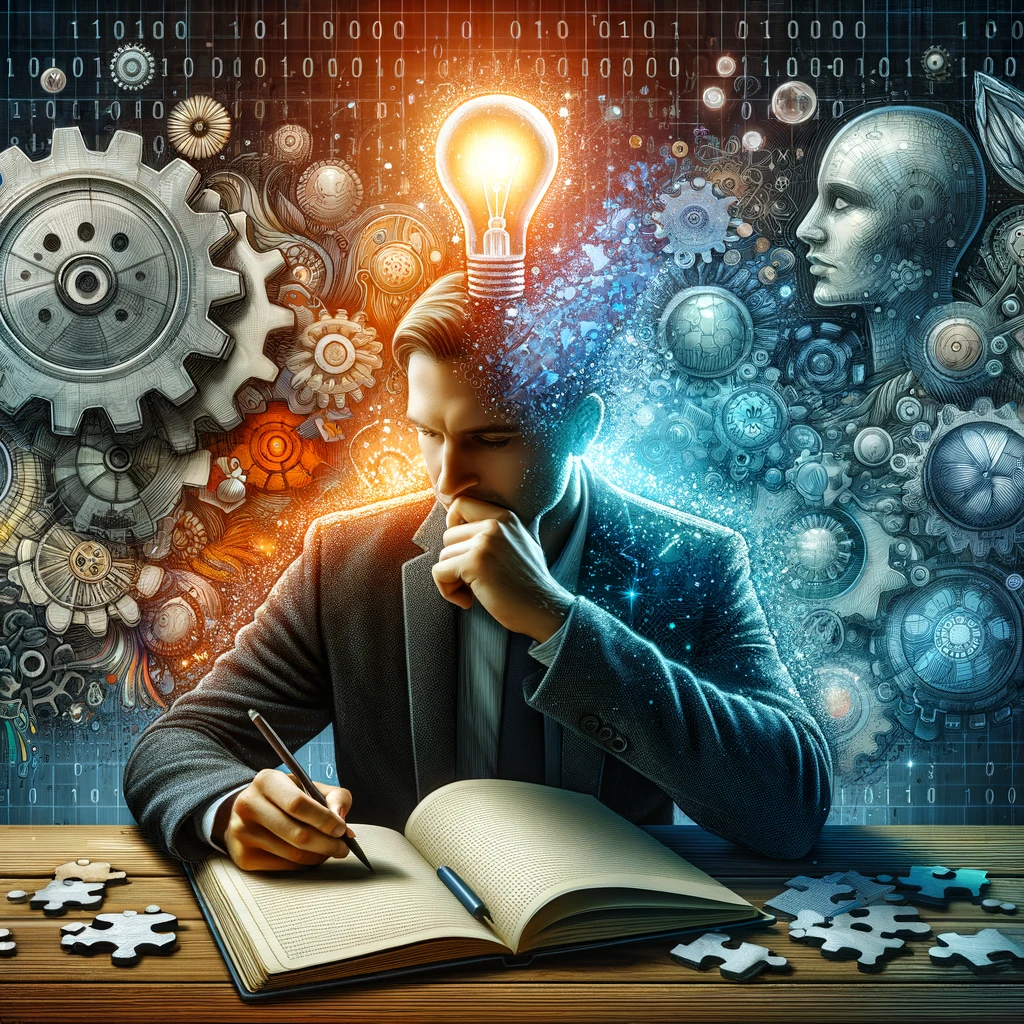
The aspect indicator is used to evaluate any System of Interests (SOI)effects on any particular one of the 3 aspects of the human: the body, mind or spirit. For instance, if the SOI is a factory that will operate with both day and night crews, the effects on the spirits of the day crew may have a more normal forecast than the spirits of the night crew, simply due to the fact that the night crew will have to deal with staying awake at times contrary to their natural circadian rhythm, and if the night crew is struggling to keep up good spirits, their production may be less.
Attitude Indicator

The attitude indicator helps keep tabs on the attitude regarding the System of Interest. Do you have a positive attitude in relation to the SOI? A positive attitude is usually directly correlated to gratitude. A positive attitude also helps you advance more efficiently regarding the SOI.
Airspeed Indicator

The Airspeed Indicator shows an evaluation of the speed at which you are advancing relative to the goals you have set for your SOI and the timelines you have laid out for those goals.
System of Context

What larger system are you evaluating your System of Interest in? This is always going to be on a broader plane than your SOI. For instance, if you are your SOI, your System of context may be your family, your office, your community, your country, etc.
Implementation Phase

This generic stage of Systems Engineering would include source selection (what products and resources are you going to use for your SOI?), Development (bring the plans for your SOI to life!), Verification (does the SOI meet the specs of what it should do?), Validation (Does the SOI meet the needs and expectations?), Production and Deployment (including what does your SOI produce and the ripple effects).
Output

The outputs of the system (if the system of interest is yourself) may be anything from physical, social, environmental, etc. Suggested inputs are presented in order to achieve desired outputs. Outputs can refer to various aspects of behavior, function, or outcomes that result from the interactions and processes within the system. These outputs encompass a wide range of phenomena across different levels of organization, from individual physiological processes to interpersonal relationships to societal dynamics.
3. Biology and Applicable Sciences

Biology and applicable sciences is a domain of study of XSE that is applied during the engineering process. How does research from the field of Biology or other applicable sciences apply to your System of Interest? How can any of this scientific information be used to improve your SOI or its operation? Conversely, how does your SOI affect any kind of life on the planet? How does your SOI affect the environment? Should you make any alterations regarding this effect?
Study Phase

This generic stage of Systems Engineering encompasses exploring different ideas leading to inception, including concept realization and the inception of innovative inventions (the power of meditation) and understanding or learning about your system of Interest. This stage includes many other stages of Systems Engineering such as Specs and Requirements and Product Definition Stages.
7. Training, Manpower, & Personnel
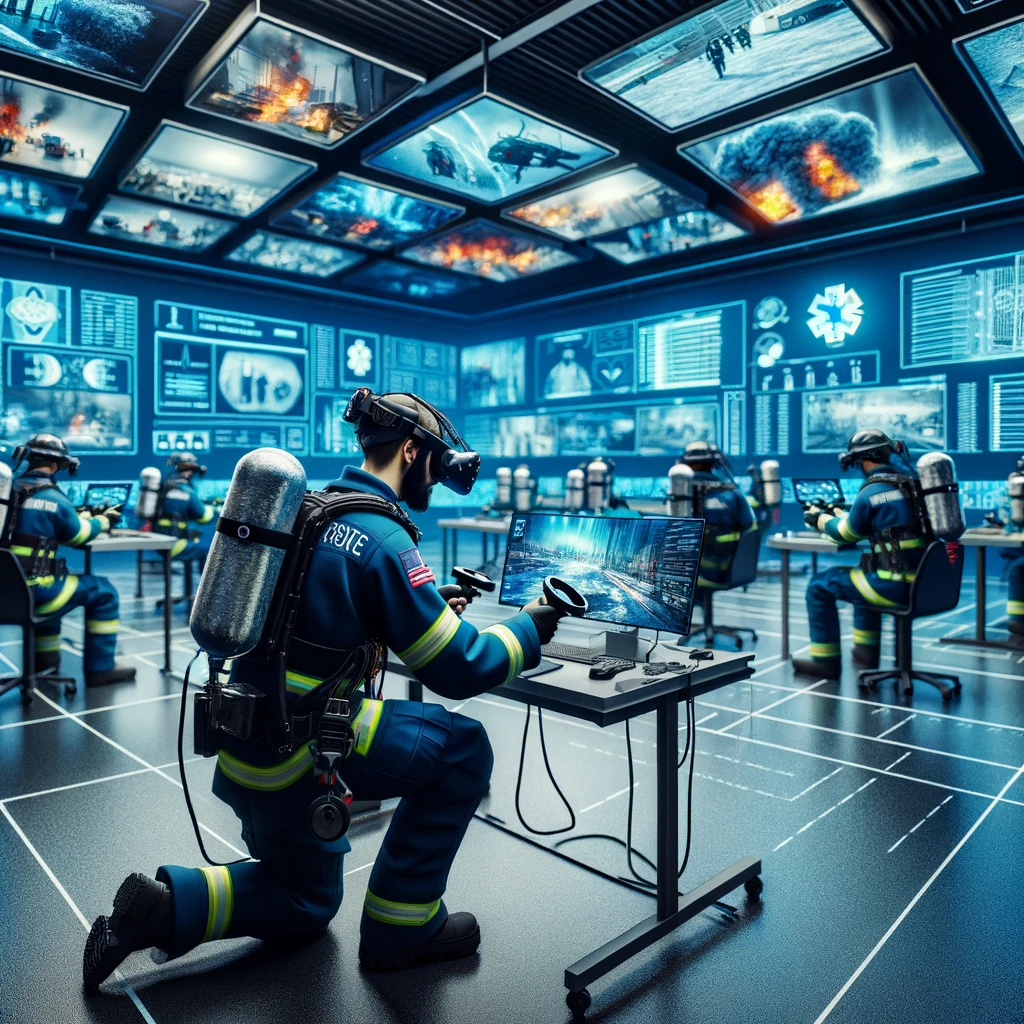
Training, Manpower & Personnel (TMP) is a domain of study of XSE that is applied during the engineering process. How does TMP apply to your System of Interest? How can any TMP related research be used to provide insight into your SOI, its operation or its potential? A question to grapple with if you appreciate turbulence: how does your SOI already play into a program of Training, Manpower or Personnel as part of a larger operation already in effect whether inadvertently or possibly even unbeknownst to you? Should you make any alterations regarding this role?
Design Phase

During the Design Period the design and architecture of the System of Interest (SOI) is formally laid out graphically and the functioning is explained. If the System is already in existence, such as yourself, then the design is discovered and laid out through reverse engineering until it is understood. The architecture of a system is less detailed than the design elements. For instance if the SOI is yourself the architecture would show the different organs and subsystems and connectivity, whereas the design of your SOI would include the details of the functioning of the organs and subsystems.
Turn Coordinator

The turn coordinator will be useful especially when making a change regarding the System of Interest (SOI). Whether the SOI is changing location, service providers, or jobs to be completed, the turn coordinator will help present outside factors to take into account that could influence the transitioning of the SOI.
Sphere of Integration
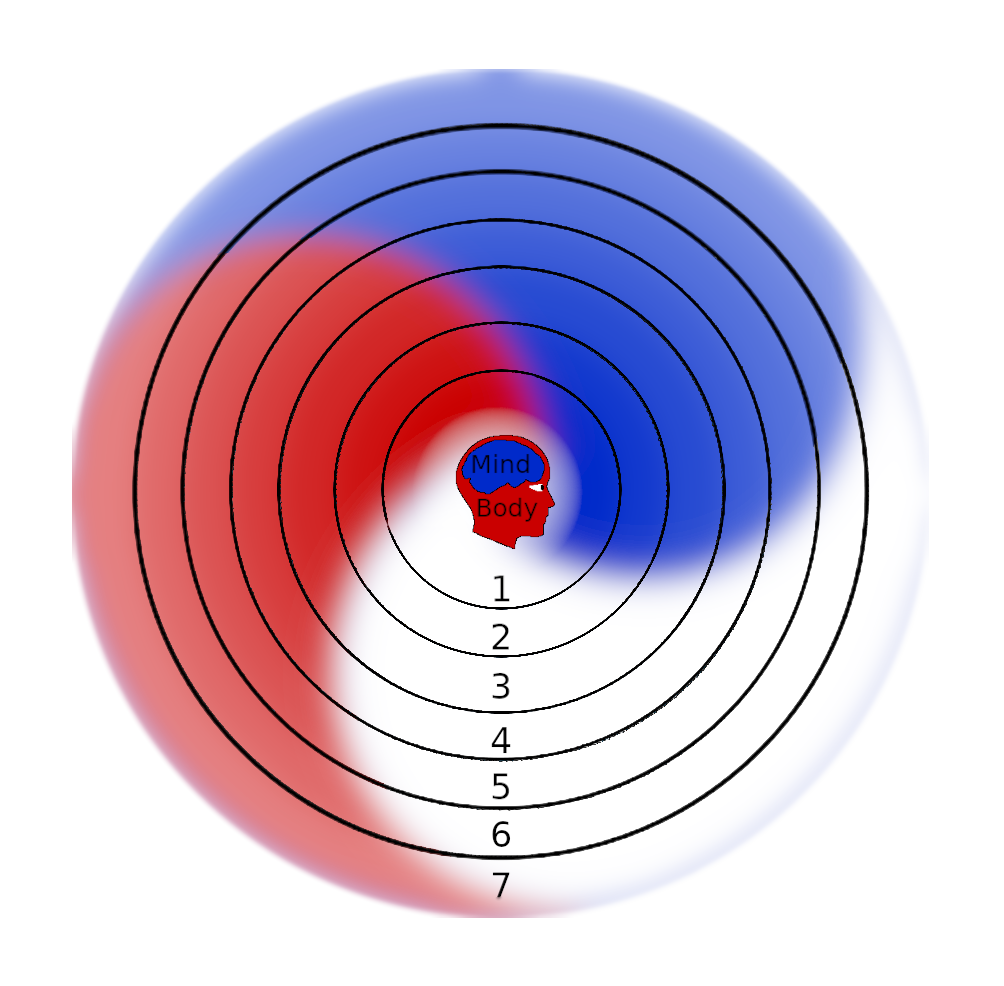
This will highlight and show the sphere of integration that your System of Interest resides in, and will have a secondary light to indicate what sphere of integration the System of Context lies in. The red, white and blue color will also light up when a particular aspect (mind, body, spirit) pertaining to the study of the SOI is chosen. For instance, if you are the SOI and your office is the SOC, and you were evaluating the impact that your office has on your spirit, Spheres 1 and 3 would be lit up and the white aspect would also be on.
Altimeter

This is a general overview of the Inputs and Outputs of your System of Interest (SOI). Suggested inputs are presented in order to achieve desired outputs. Outputs can also be used as a health check to some extent. However, due to situational factors that may be not within ability to control, the outputs can be limited in determining the health of the SOI. For instance, you may want to increase your level of joy, so certain VR experiences may be recommended to you, along with dietary changes, however depending on your starting point (are you clinically depressed, mourning the loss of a loved one, etc) your output is not necessarily an accurate picture of how you are doing.
1. Law

Law is a domain of study of XSE that is applied during the engineering process. What laws apply to your System of Interest? How do these laws affect your SOI? On the flip side, how do you affect the laws? Should you make any alterations regarding this effect?
2 Psychology

Psychology is a domain of study of XSE that is applied during the engineering process. What research within the field of psychology can be used to improve your System of Interest? Similarly, how do you affect the Psychology of the world in general? Should you make any alterations to your impact on others around you?
5. Environmental & Occupational Safety & Health

Environmental and Occupational Safety and Health (EOSH) is a domain of study of XSE that is applied during the engineering process. How does research from this field of study apply to your System of Interest? How can any of this information be used to improve your SOI, its effects on the environment, its safety or health implications regarding its production or operation? On the flip side, how do the current conditions and restrictions of EOSH affect your SOI? Should you make any improvements regarding this?
6. Surviviability and Habitability

Survivability and Habitability (S&H) is a domain of study of XSE that is applied during the engineering process. How does knowledge of S&H apply to your System of Interest? How can any of this scientific information be used to improve the S&H of your SOI? What resources does your SOI depend on for S&H? What if those necessary resources are not available tomorrow? How can you minimize what your SOI relies on in order to increase its S&H? What should be added to your SOI in order to increase its S&H of its own accord? On the flip side, does your SOI impact the ability of S&H of any other system? Should you make any alterations regarding this fact?
Key

The XSE Cyber Key is a "key to eclipse" into a detached zone in order to maximize the potential of succeeding at the X, Y, and Z Axioms, therefore, optimizing your system. The XSE Key is a powerful tool that when grasped, enables an immediate detachment from the moment physically, mentally, and emotionally/spiritually. Once adept at grasping the key, it can then be used as a catalyst to enter the XSE Vantage Point for the astronomical view.
4. Human Factors Engineering

Human Factors Engineering (HFE) is a domain of study of XSE that is applied during the engineering process. How does research from the field of HFE apply to your System of Interest? How can any of this information be used to improve your SOI or its operation? Conversely, how does your SOI affect the domain of HFE or other HFE engineered systems on the planet? Should you make any alterations regarding this effect?
Input

When considering the human as a complex system, inputs can be understood as various factors, influences, and stimuli that affect the functioning, behavior, and development of the individual. Inputs can come from internal and external sources and play a crucial role in shaping the dynamics and outputs of the human system.
